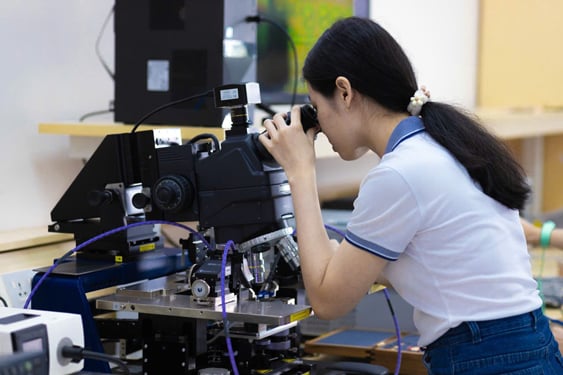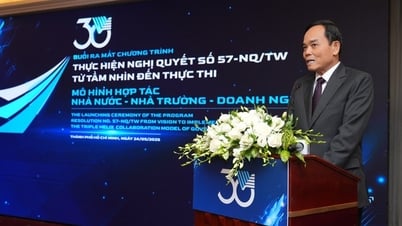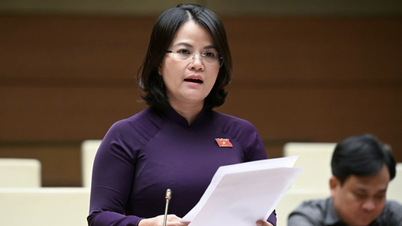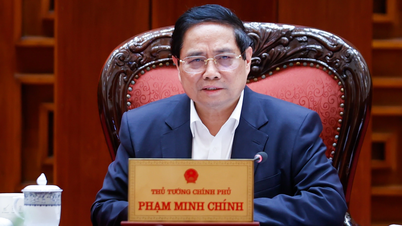30 years ago, the Prime Minister signed Decree 16/CP to establish Ho Chi Minh City National University with the mission of being a multidisciplinary, multi-field, high-quality training, scientific research and technology transfer center, on par with the region, gradually reaching international standards, playing a pioneering and core role in the Vietnamese universityeducation system, effectively serving the cause of innovation and national development.
Inadequacies of the two-level university model
From 3 member schools with 3 fields: natural sciences, social sciences and humanities, engineering and technology, up to now, the Ho Chi Minh City National University system has 8 member universities, expanding training fields such as agriculture , pedagogy, health sciences, arts...
The former principal of a member university of Ho Chi Minh City National University said that 30 years ago, universities in Vietnam were mainly single-field with a few training majors, while the urgent need at that time was to have a multi-disciplinary university. The solution to that problem was the establishment of two National Universities (Ho Chi Minh City and Hanoi ) by "gathering" existing strong universities.

Students of Ho Chi Minh City University of Technology - VNU-HCM in the research room. Photo: HUY LAN
However, the process of formation as well as the operation of the system encountered many obstacles. In Hanoi, the University of Technology resolutely refused to join the Hanoi National University system; in Ho Chi Minh City, the University of Technology (then with a different name) joined the Ho Chi Minh City National University system together with the University of General Sciences (later split into the University of Natural Sciences and the University of Social Sciences and Humanities); other universities such as the Ho Chi Minh City University of Education, Ho Chi Minh City University of Technical Education, Ho Chi Minh City University of Economics (now Ho Chi Minh City University of Economics), Ho Chi Minh City University of Law were once part of the Ho Chi Minh City National University system but were later split into universities under the Ministry of Education and Training (MOET).
The same former leader said that the context of university education today is different, not only does the National University train in many fields, but many other universities also develop in many fields and disciplines. Therefore, the model of the National University and Regional University is no longer suitable, and member universities of the National University and Regional University, which have wanted to be independent, now feel "suffocated" because universities outside the National University are developing too quickly, and member universities of the National University and Regional University have many layers of management, causing delays in decision-making.
Associate Professor, Dr. Thai Ba Can, former Principal of Ho Chi Minh City University of Technical Education, said that the existence of the two national universities and regional universities has not always been smooth, and there have been many opinions on whether this model should exist. Currently, whether universities under the national university, regional universities, universities or colleges are all under the management of the Ministry of Education and Training, but universities under the national university and regional universities are subject to an additional layer of intermediate management. The question is, what are the advantages of universities under the national university and regional universities when in reality, universities not under the national university or regional universities are developing strongly?
Against the principle of autonomy
At the seminar "Policy consultation on the draft revised Law on Higher Education" organized by the Ministry of Education and Training, Associate Professor Dr. Bui Xuan Hai, Rector of Hai Phong University, said that currently in the world, there is almost no two-level university model, meaning there are no "universities within universities". This makes it impossible for member universities to develop, and at the same time, they fall into a "two-way trap" situation - being under the management of both the parent university and the state management agency.
"Let's see in other countries in the world, which country has a two-level university model like ours? This puts a new "ring" on member schools - because the host university is not a state management agency, does not have the function of state management but manages the schools, which is against the principle of university autonomy" - Mr. Hai expressed his opinion.
Mr. Bui Xuan Hai also supports the view that there should not be a legal entity within another legal entity. Universities should not be allowed to have member universities within them. National universities and regional universities should be abolished, and small universities should be developed and merged into national universities and regional universities to match their stature. If we maintain universities that are too small, it will eliminate the potential for investment in staff and financial development.
Sharing the same view, Mr. Vu Hoang Linh, Chairman of the Council of the University of Natural Sciences - VNU Hanoi, said that the two-level university model is stuck and needs to be reviewed. According to him, the most difficult thing about the university model is not management, but when working with foreign partners. "They come, I introduce myself as a university, and above me there is another university. Foreigners do not understand what Vietnamese university education is like when there is a university within a university. We have to explain that the university above is like an umbrella..." - Mr. Linh shared.
According to Mr. Bui Xuan Hai, if member universities have been identified, let them be autonomous like other independent universities, without the need for the "umbrella above" as it is now. This needs to be strongly reformed, so that member universities and regional universities can develop autonomously.
Suggest improvements, optimal arrangements
Assessing the impact of the Law on Higher Education, experts also acknowledged that the regulations on university organizations with member universities (2-level model) have many shortcomings, especially when implementing the autonomy mechanism. The school councils of some higher education institutions have not operated effectively, have not properly and fully implemented their functions, tasks, powers and forms. Regarding the organization and management of higher education institutions, the regulations on units under higher education institutions with legal status cause difficulties, complications and risks in the organization and management of educational institutions.
Deputy Minister of Education and Training Hoang Minh Son emphasized the need to analyze the shortcomings of the two-level university model, not of regional universities or national universities alone. "National universities are managed by the state according to their own missions and have their own positions. We are discussing internal governance, not abolishing regional universities or national universities. We must look at the current model and propose improvements to optimize the arrangement for efficiency," said the Deputy Minister of Education and Training.
Source: https://nld.com.vn/mo-hinh-dhqg-dh-vung-co-con-phu-hop-196250516211015474.htm



![[Photo] The Government Standing Committee works with ministries and branches on the real estate market situation.](https://vphoto.vietnam.vn/thumb/1200x675/vietnam/resource/IMAGE/2025/5/24/e9b5bc2313d14c9499b8c9b83226adba)



![[Photo] Ho Chi Minh City holds funeral for former President Tran Duc Luong](https://vphoto.vietnam.vn/thumb/1200x675/vietnam/resource/IMAGE/2025/5/24/9c1858ebd3d04170b6cef2e6bcb2019e)






















![[Photo] Party and State leaders visit former President Tran Duc Luong](https://vphoto.vietnam.vn/thumb/1200x675/vietnam/resource/IMAGE/2025/5/24/960db9b19102400e8df68d5a6caadcf6)































































Comment (0)